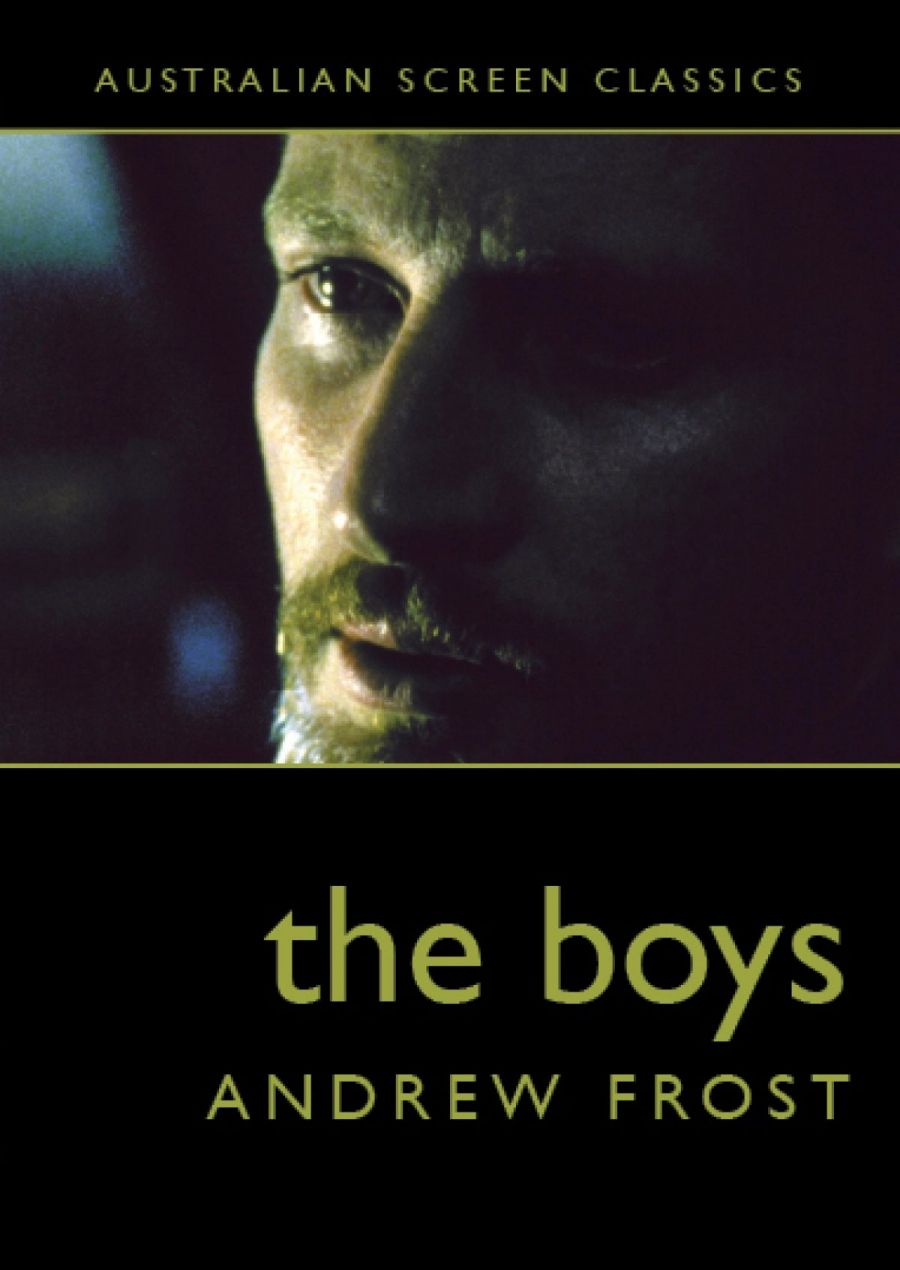
- Free Article: No
- Contents Category: Film
- Review Article: Yes
- Online Only: No
- Custom Highlight Text:
Suburban crime narratives featured in many Australian films in the 1990s, partly due to the influence of director Rowan Woods’s film The Boys, which drew inspiration from the ‘kitchen sink’ cinema of 1960s Britain. Twelve years after its theatrical release, this seminal film – based on the play by Gordon Graham and written for the screen by Stephen Sewell – remains the best example of an Australian genre that illustrates Marcus Clarke’s conception of ‘weird melancholy’ in the criminal element of our cities’ troubled underclass.
- Book 1 Title: The Boys
- Book 1 Subtitle: Andrew Frost
- Book 1 Biblio: Currency Press (Australian Screen Classics), $16.95 pb, 80 pp, 9780868198620
- Book 1 Readings Link: booktopia.kh4ffx.net/LVX4Z
Writer and broadcaster Andrew Frost asserts that ‘few films [since The Boys] have attempted anything like its bold combination of classical tragedy, social realism and artfully constructed filmmaking techniques’, and supports this claim with an analysis of the film’s construction and some contextualising anecdotes. Frost, who made films with Woods as part of the Sydney Super 8 Film Group in the 1980s, reflects on their relationship and shared film education. Mike Thornhill’s The F.J. Holden (1977) impressed because it ‘did look like the world [they] lived in’.
Frost’s deconstruction of the methods with which The Boys achieves its sense of menace is clear and convincing. The film’s narrative, a variation on the true story of Sydney nurse Anita Cobby’s rape and murder in 1986, is presented out of chronological order, and its disjunctive editing style is designed to deprive ‘the audience of a stable point of identification’. Shots are ‘cluttered with detail’, and production designer Luigi Pettorino’s ‘cold grain’ colour range suggests ‘disintegration’. ‘One of the central conventions of cinema – the ability to see what is happening’, Frost says, is consciously undermined.
This is an intelligent book with popular appeal, and an excellent addition to Currency Press’s Australian Screen Classics series.


Comments powered by CComment